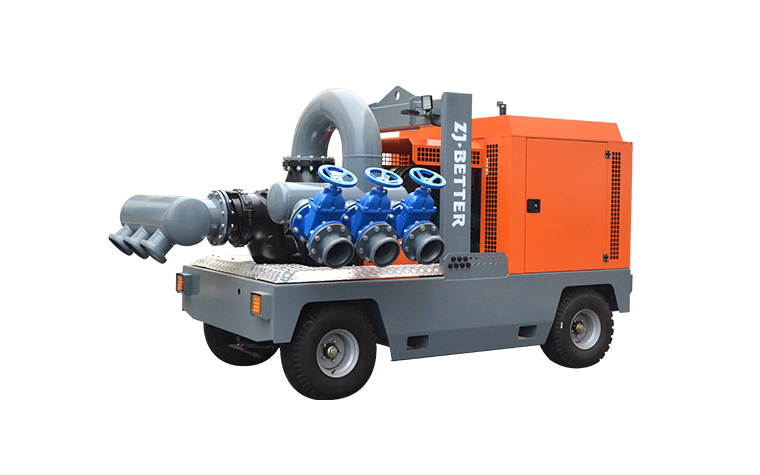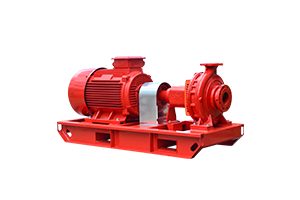Sep 21, 2023
Diesel engine fire pump cleaning method
Cleaning and maintaining a diesel engine fire pump is essential to ensure its reliability in emergency situations. Here are some steps and methods for cleaning a diesel engine fire pump:
Safety Precautions: Before starting any maintenance work, ensure the diesel engine fire pump is turned off, and the electrical system is disconnected. Also, follow all safety guidelines and wear appropriate personal protective equipment.
Exterior Cleaning:
Wipe down the exterior of the diesel engine to remove dust, dirt, and grease using a clean cloth or rag.
Use a mild detergent or degreaser diluted with water to clean stubborn stains or heavy dirt buildup. Rinse thoroughly with clean water.
Cooling System Cleaning:
Inspect the cooling system for debris and dirt that may clog the radiator or cooling fins.
Use compressed air or a soft brush to remove debris from the radiator and cooling fins.
Check the coolant level and top up if necessary with the recommended coolant mixture.
Air Filter Cleaning:
Check the air filter for dirt and debris. If it's dirty, remove it.
Tap the air filter gently to dislodge loose dirt and debris.
If it's heavily clogged, consider replacing the air filter with a new one.
Fuel System Cleaning:
Regularly drain the water and sediment from the fuel filter/water separator to prevent contamination.
Check the fuel tank for debris or water. If any is present, it may be necessary to drain and clean the fuel tank.
Oil and Lubrication:
Check the oil level and condition. If the oil is dirty or below the recommended level, change the oil and replace the oil filter.
Lubricate moving parts and joints as specified in the maintenance manual.
Exhaust System:
Inspect the exhaust system for any blockages or damage.
Remove any soot or carbon buildup in the exhaust system to maintain proper exhaust flow.
Electrical System:
Inspect wiring and connections for signs of wear, corrosion, or damage. Repair or replace any damaged components.
Ensure all electrical connections are secure.
Testing and Inspection:
After cleaning, conduct a test run of the diesel engine fire pump to ensure it starts, runs, and operates as expected.
Monitor for any unusual sounds or signs of problems during the test run.
Documentation: Maintain detailed records of cleaning, maintenance, and inspections. Note any issues found and actions taken for future reference.
It's important to follow the manufacturer's maintenance schedule and recommendations provided in the user manual for your specific diesel engine fire pump. Regular cleaning and maintenance will help ensure the pump operates reliably when needed during a fire emergency. If you're not familiar with diesel engine maintenance, it's advisable to consult a professional technician or service provider.
 Sep 25, 2023In addition to the fire pump, what other parts does the fire water supply system consist of?A fire water supply system is a crucial component of a building's fire protection infrastructure. In addition to the fire pump, it consists of various other parts and components to ensure an adequate and reliable water supply in the event of a fire. These components typically include:View details
Sep 25, 2023In addition to the fire pump, what other parts does the fire water supply system consist of?A fire water supply system is a crucial component of a building's fire protection infrastructure. In addition to the fire pump, it consists of various other parts and components to ensure an adequate and reliable water supply in the event of a fire. These components typically include:View details Sep 25, 2023Reasons for the decrease in water supply of diesel engine fire pumpsA decrease in water supply to diesel engine fire pumps can have various causes, all of which should be promptly addressed to ensure the effectiveness of the fire protection system. Some common reasons for a decrease in water supply to diesel engine fire pumps include:View details
Sep 25, 2023Reasons for the decrease in water supply of diesel engine fire pumpsA decrease in water supply to diesel engine fire pumps can have various causes, all of which should be promptly addressed to ensure the effectiveness of the fire protection system. Some common reasons for a decrease in water supply to diesel engine fire pumps include:View details Sep 25, 2023Reasons for the decrease in water supply of diesel engine fire pumpsA decrease in water supply to diesel engine fire pumps can have various causes, all of which should be promptly addressed to ensure the effectiveness of the fire protection system. Some common reasons for a decrease in water supply to diesel engine fire pumps include:View details
Sep 25, 2023Reasons for the decrease in water supply of diesel engine fire pumpsA decrease in water supply to diesel engine fire pumps can have various causes, all of which should be promptly addressed to ensure the effectiveness of the fire protection system. Some common reasons for a decrease in water supply to diesel engine fire pumps include:View details Sep 22, 2023Working principle of fire pump ball valveA fire pump ball valve is a type of directional control valve used in fire suppression systems to control the flow of water or firefighting foam. It operates based on a simple yet effective principle involving the movement of a ball inside the valve body. Here's an overview of the working principle of a fire pump ball valve:View details
Sep 22, 2023Working principle of fire pump ball valveA fire pump ball valve is a type of directional control valve used in fire suppression systems to control the flow of water or firefighting foam. It operates based on a simple yet effective principle involving the movement of a ball inside the valve body. Here's an overview of the working principle of a fire pump ball valve:View details Sep 22, 2023Working principle of fire pump directional control valveA directional control valve in a fire pump system plays a critical role in controlling the flow of water or firefighting foam to various parts of the fire suppression system. These valves are used to direct water or foam to specific locations, such as fire hoses, sprinkler systems, or other firefighting equipment. Here's an overview of the working principle of a directional control valve in a fire pump system:View details
Sep 22, 2023Working principle of fire pump directional control valveA directional control valve in a fire pump system plays a critical role in controlling the flow of water or firefighting foam to various parts of the fire suppression system. These valves are used to direct water or foam to specific locations, such as fire hoses, sprinkler systems, or other firefighting equipment. Here's an overview of the working principle of a directional control valve in a fire pump system:View details.jpg) Sep 21, 2023Diesel engine fire pump cleaning methodCleaning and maintaining a diesel engine fire pump is essential to ensure its reliability in emergency situations. Here are some steps and methods for cleaning a diesel engine fire pump:
Sep 21, 2023Diesel engine fire pump cleaning methodCleaning and maintaining a diesel engine fire pump is essential to ensure its reliability in emergency situations. Here are some steps and methods for cleaning a diesel engine fire pump:
.png)
.png)

.png)


